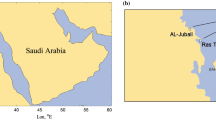Abstract.
Accurate and reliable sampling and analysis of mercury forms is an overriding aim of any atmospheric monitoring effort which seeks to understand the fate and transport of the metal in the environment. Although a fraction of the total mercury forms found in the atmosphere, particulate phase mercury, Hgp, is believed to play a prominent role in both wet and dry deposition to the terrestrial and aquatic environments. Currently, microwave acid extraction and thermoreductive methodologies for analysis of Hgp samples are widely used. We report on the potential for the use of a thermoreductive method for Hgp analysis to evaluate and optimize it for use in routine monitoring networks. Pre-baked quartz filters can be placed in particulate samplers with well-characterized size cuts, such as dichotomous samplers and microoriface impactors. The thermoreductive methodology facilitates rapid analysis after sample collection. It requires no chemical extraction thereby eliminating the potential for contamination and generation of hazardous waste. Our results indicate that, on average, the thermoreductive method yields 30% lower values for fine fraction Hgp when compared with microwave acid digestion. This may be due to matrix interferents that reduce the collection efficiency of mercury onto gold preconcentration traps. Results for total particulate mercury samples indicate that on average the thermoreductive method yields 56% lower values for the coarse fraction when compared with microwave acid digestion.
Experiments were also conducted in Detroit, MI, USA to investigate whether elevated reactive gaseous mercury (Hg2+ g) in an urban environment can lead to an artifact during the collection of filters for Hgp analysis. Our results indicate a significantly higher amount of Hgp collected onto a filter using the conventional methodology as compared to a filter collected downstream of KCl-coated annular denuders in the absence of Hg2+ g. These results point to the presence of Hg2+ g as an artifact during Hgp measurement. These results indicate that a denuder must be utilized upstream of a filter for Hgp collection to prevent significant Hg2+ g artifact formation.
Similar content being viewed by others
Author information
Authors and Affiliations
Additional information
Electronic Publication
Rights and permissions
About this article
Cite this article
Lynam, M.M., Keeler, G.J. Comparison of methods for particulate phase mercury analysis: sampling and analysis. Anal Bioanal Chem 374, 1009–1014 (2002). https://doi.org/10.1007/s00216-002-1584-4
Received:
Revised:
Accepted:
Issue Date:
DOI: https://doi.org/10.1007/s00216-002-1584-4




